 Hailing from Beijing, China, Xuberance is a product design firm that leverages 3D printing technology to create unique furniture pieces and accessories. By embracing BigRep’s large-scale 3D printers, Xuberance is writing a new design narrative that combines sustainability and unparalleled design freedom.
Hailing from Beijing, China, Xuberance is a product design firm that leverages 3D printing technology to create unique furniture pieces and accessories. By embracing BigRep’s large-scale 3D printers, Xuberance is writing a new design narrative that combines sustainability and unparalleled design freedom.


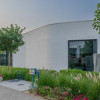 Last week, at a launch event involving Xiaomi's Smart living concept, Emaar finally unveiled Dubai's first 3D printed "villa" house, which was previously delayed due to the Covid-19 pandemic.
Last week, at a launch event involving Xiaomi's Smart living concept, Emaar finally unveiled Dubai's first 3D printed "villa" house, which was previously delayed due to the Covid-19 pandemic.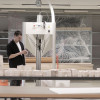 “MyCera. Application of mycelial growth within digitally manufactured clay structures" published by Shape Lab - Institute of Architecture and Media, Graz University of Technology (TU Graz)
“MyCera. Application of mycelial growth within digitally manufactured clay structures" published by Shape Lab - Institute of Architecture and Media, Graz University of Technology (TU Graz)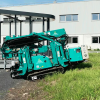 3D printing has taken huge leaps in the construction industry, opening new perspectives in the field. Among the most remarkable innovations is the MaxiPrinter, a mobile 3D printer specifically designed for construction sites.
3D printing has taken huge leaps in the construction industry, opening new perspectives in the field. Among the most remarkable innovations is the MaxiPrinter, a mobile 3D printer specifically designed for construction sites. We are happy to announce that architecture studio 3DELUXE together with Urbach & Falter Architects has been contracted for a progressive housing project in Wiesbaden! The project commissioned by the municipal housing company GWW, incorporates various elements for a forward-thinking and sustainable building approach that provides affordable living spaces in a healthy environment. A climate-friendly timber-hybrid construction with a large scale installation of a photovoltaic system and a versatile outdoor area for social togetherness in a natural environment is planned.
We are happy to announce that architecture studio 3DELUXE together with Urbach & Falter Architects has been contracted for a progressive housing project in Wiesbaden! The project commissioned by the municipal housing company GWW, incorporates various elements for a forward-thinking and sustainable building approach that provides affordable living spaces in a healthy environment. A climate-friendly timber-hybrid construction with a large scale installation of a photovoltaic system and a versatile outdoor area for social togetherness in a natural environment is planned.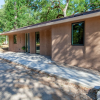 The house is compliant with the state’s rigorous building codes – the strictest in the USA.
The house is compliant with the state’s rigorous building codes – the strictest in the USA.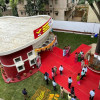 L&T used COBOD’s 3D printing technology to cut execution time by 80% and reduce cost by 40%
L&T used COBOD’s 3D printing technology to cut execution time by 80% and reduce cost by 40% Progreso, a leader in Central and South America’s cement industry, recently inaugurated Guatemala’s first 3D printed house.
Progreso, a leader in Central and South America’s cement industry, recently inaugurated Guatemala’s first 3D printed house.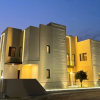 The world’s tallest 3D printed building is now complete and it is in many ways impressive.
The world’s tallest 3D printed building is now complete and it is in many ways impressive. 3D construction printing is helping Ukraine to rebuild faster.
3D construction printing is helping Ukraine to rebuild faster.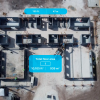 Florida-based Printed Farms achieves a groundbreaking feat by completing the printing of the world’s largest 3D printed building, a luxury horse barn, using COBOD’s BOD2 construction 3D printer, marking another record for the world’s most used 3D printer.
Florida-based Printed Farms achieves a groundbreaking feat by completing the printing of the world’s largest 3D printed building, a luxury horse barn, using COBOD’s BOD2 construction 3D printer, marking another record for the world’s most used 3D printer. Project showcases 3D construction printing's potential beyond low-rise residential housing, utilizing COBOD's BOD2 printer
Project showcases 3D construction printing's potential beyond low-rise residential housing, utilizing COBOD's BOD2 printer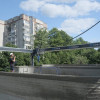 3D construction printing is helping Ukraine to rebuild faster.
3D construction printing is helping Ukraine to rebuild faster.




















































































